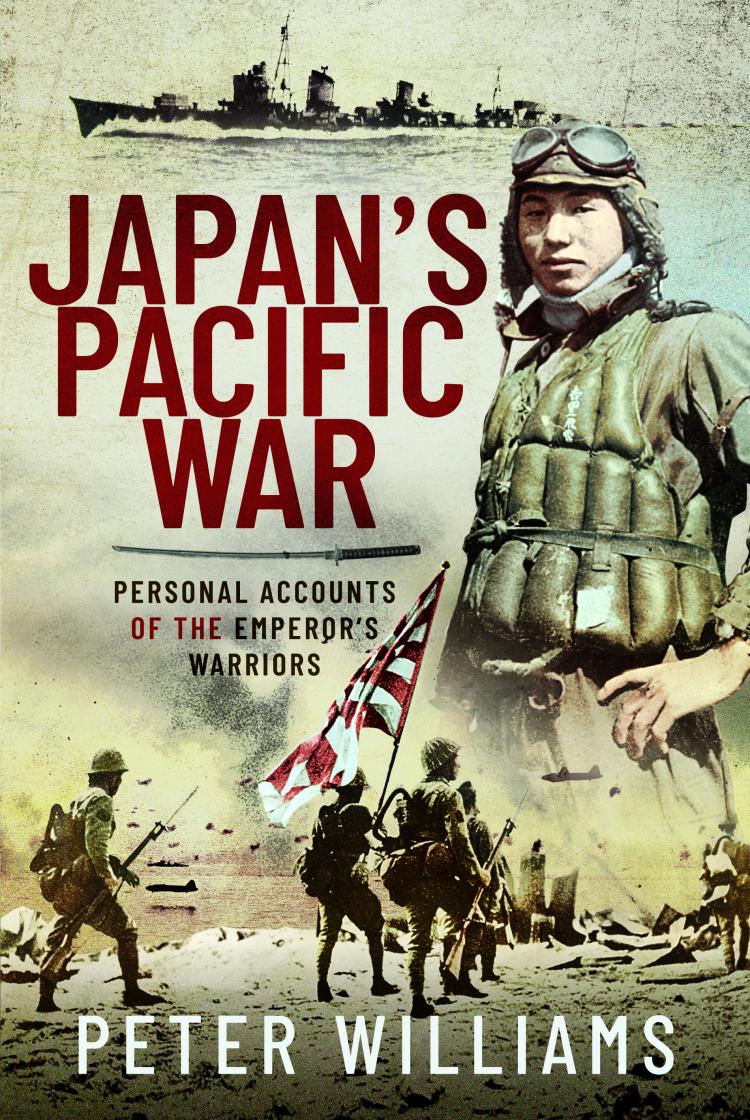Japan’s Pacific War is a collection of personal accounts from over 100 former Japanese soldiers, sailors and airmen recorded by Dr Peter Williams when he lived in Japan in the 1980s. It has not been published until now to respect the wishes of some interviewees.
Williams’ previous publications include: The battle of Anzac Ridge 25 April 1915 (Australian Milirary History Publications: Loftus, NSW, 2007); Kokoda for Dummies (John Wiley: Richmond, Vic., 2012); and The Kokoda Campaign 1942: myth and reality (Cambridge University Press: Port Melbourne, 2012).

The Japanese Government’s official history of what we call World War II in the Pacific was not commenced until 1955 and was significantly disadvantaged by the deliberate destruction of government records prior to the Allied occupation of Japan. Japan’s Pacific War improves our understanding of the ‘enemy’ and complements Steven Bullard’s translation of the Japanese official history [Japanese Army operations in the South Pacific Area: New Britain and Papua Campaigns, 1942-1943 (Australian War Memorial: Canberra, 2007 )].
Japan’s Pacific War provides insights into the tactical and personal dimensions of the fighting from Japanese combatants and prisoners-of-war. Their candid views are often provocative and surprising, with admissions of brutality, the killing of prisoners and cannibalism. Stark descriptions of appalling conditions and bitter fighting blend with recollections of family life and close co-operation with locals in occupied territories. The Japanese soldiers’ willingness and enthusiasm to give their lives for the Emperor, and their drive to die honourably, contrast starkly with the Allies’ desire to minimise casualties.
Their views on the prowess of their enemy differ – air ace Kazuo Tsunoda believed the Australians were ‘worthy’ foes; others felt that the Allies judicious use of artillery and airpower belied a lack of fighting spirit. Williams also usefully matches many Japanese accounts of encounters with corresponding versions from the official Australian records.
The last two chapters record how Japanese veterans after the war ended were stigmatised and marginalised by both the occupation forces and civilian Japanese. Many suffered from mental health issues, drank excessively or committed suicide. Many felt that they had been forced into the Pacific war by American trade policies preventing import of raw materials. Several saw their mission to be one of freeing east Asia from western colonialism. Some were ashamed of their actions in the war, while others remained unrepentant. “I had no qualms fighting the Australians, just as I have killed without remorse any of the Emperor’s enemies …” states Takahiro Sato.
Japan’s Pacific War includes one map, a number of black-and-white photographs and two appendices concerning Japanese air tactics and naval life. The book provides revealing insights into the mind of a formidable adversary. It is highly recommended to military historians as well as those interested in the cultural differences between the Eastern and Western attitude to war.
Contact Marcus Fielding about this article.






